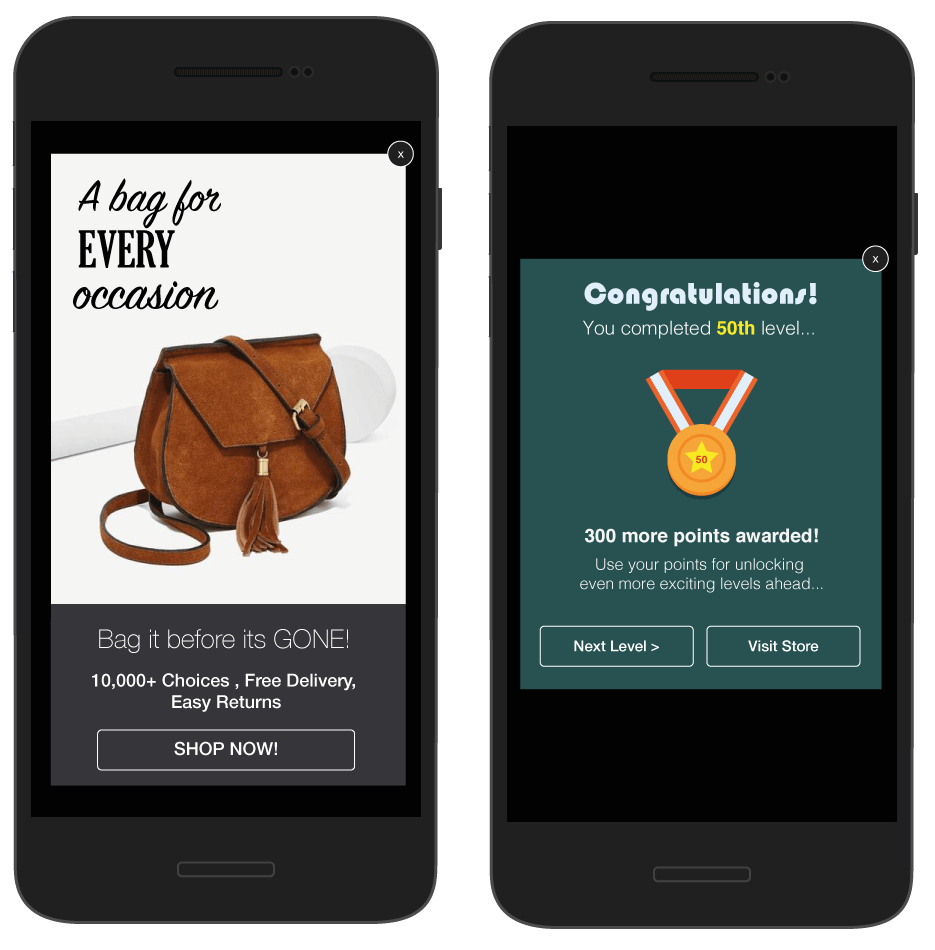Learn how you can Unlock Limitless Customer Lifetime Value with CleverTap’s All-in-One Customer Engagement Platform.

Anyone with a smartphone — which is most of us these days — has any number of apps installed on their phone, dozens perhaps. Some we may use all the time: to get driving directions, check email or our social media sites, make a mobile payment, and see what the weather holds for the week. But undoubtedly, we also have numerous apps installed that we rarely, if ever, use.
Indeed, despite the popularity of apps, retaining users and keeping them engaged and loyal are some of the biggest challenges that mobile app makers face. Most apps struggle to keep users interested and active after they download an app. In fact, the average app loses a whopping 77% of users in the first 3 days, and 24% of all apps are used only once*.
How can marketers and growth managers overcome this problem and retain their users?
One of the most effective solutions is to make use of in-app messaging. In-app messages are notifications that appear while a customer is using the app. They can help you communicate with customers in a way that’s timely, relevant, and personalized and guide them to take the actions that will benefit both them and your business.
There are different types of in-app messages—for onboarding, special promotions, new features and announcements—and each can be used to enhance the user experience and increase engagement. In-app messages can provide users with the support they need while using your app and done right, can make them feel valued and increase their satisfaction with your app.
In-app messaging should absolutely be a part of your mobile marketing strategy as these messages can effectively engage different user segments, but they do not require opt-ins like push notifications do.
Through in-app messaging, marketers can personalize messages based on specifically segmented user groups, increasing the likelihood that users will stay engaged and ultimately retained for the long run. This is true for brand new users, those who are onboarding and starting to explore the app’s features, and even users who are already active and engaged.
According to our data, in-app messages can increase click-through rates by more than 100% as compared to push notifications. We found out that different industries have different average CTRs for in-app messages. For example, fintech apps have the highest average click-through rate at 24%*, followed by food tech apps at 21%* and OTT/streaming media apps at 18.32%*.
These numbers suggest that delivering contextual and targeted in-app messages work to engage users in the moment of high intent, while they are interacting with your app.
So, how can you use in-app messaging effectively to boost user retention? Here are some tips:
Users expect personalized experiences that cater to their needs, preferences, and interests. By monitoring habits and preferences of users, marketers can send specific messages and offers to users with specific profiles.
For example, send welcome messages to new users, recommend new sneakers to sneakerheads, or even celebrate the milestones of loyal users.
This will allow you to send contextual messages that match user needs and interests. Dividing your users into different groups based on their location, device, app usage frequency, purchase history, preferences, and actions allows you to tailor your in-app messages to each user group and deliver the right message at the right time.
For instance, you can send a welcome message to new users, a feature update to users who have been inactive for a while, and a coupon to users who have been very active. More segmentation tips lie in our User Segmentation Pocket Guide.
Grab the user’s attention and convey the value proposition of your message. Your in-app message copy is the text that communicates your message to your users and persuades them to take action. For example, if you want the user to rate your app, you can say: “Love our app? Rate us and get a free gift!”
Placing rich content — Images, videos, and emojis — has the power to make your in-app messages more appealing, expressive, and memorable if they are rendered perfectly across different devices and are relevant, appropriate, and consistent with your brand voice and tone.
Motivate the user to take the desired action with a call-to-action (a button or text link that tells the user what to do) which is clear, specific, actionable, and should create a sense of urgency or curiosity that motivates the user to click.
For example, instead of saying “Learn more,” you can write “See how it works” or “Download the report now.” Make sure the action is easy and convenient for the user to complete and tells them exactly what to expect at the end of the link. For more push notification copywriting tips, check out our ebook.
See which variations perform better. A/B test for different types of messages (onboarding, promotion, feedback), formats (banner, full-screen), timings (when the user opens the app, completes a task, leaves the app), and frequencies (once per day, once per week, once per month). Analyze deliveries, view rates, CTRs and conversions to measure the performance and impact of your in-app messages.
Testing helps you optimize in-app messaging for maximum efficacy. It allows you to find out what resonates with users and what drives them to take action. This prevents you from wasting resources on ineffective or counterproductive campaigns.
In-app messaging is a powerful tool for engaging users but it can also backfire if used incorrectly or excessively. Carefully consider the context and timing of your messages. Don’t spam users with too frequent or irrelevant messages that might annoy them or disrupt their app experience, or worse yet, result in them uninstalling your app.
User retention is a key metric for any digital product. It shows how well a product meets users’ needs and delivers value. CleverTap provides features such as rich media support, drag-and-drop editor, pre-built templates, A/B testing, and analytics for in-app messages. This helps marketers in creating in-app messaging campaigns based on user behavior, preferences, and lifecycle stage.
If used to its full potential in-app messaging is a powerful tool to aid retention, communicate with users and keep them engaged. By using in-app messaging strategically, apps can boost user retention, loyalty and revenue.

See how today’s top brands use CleverTap to drive long-term growth and retention